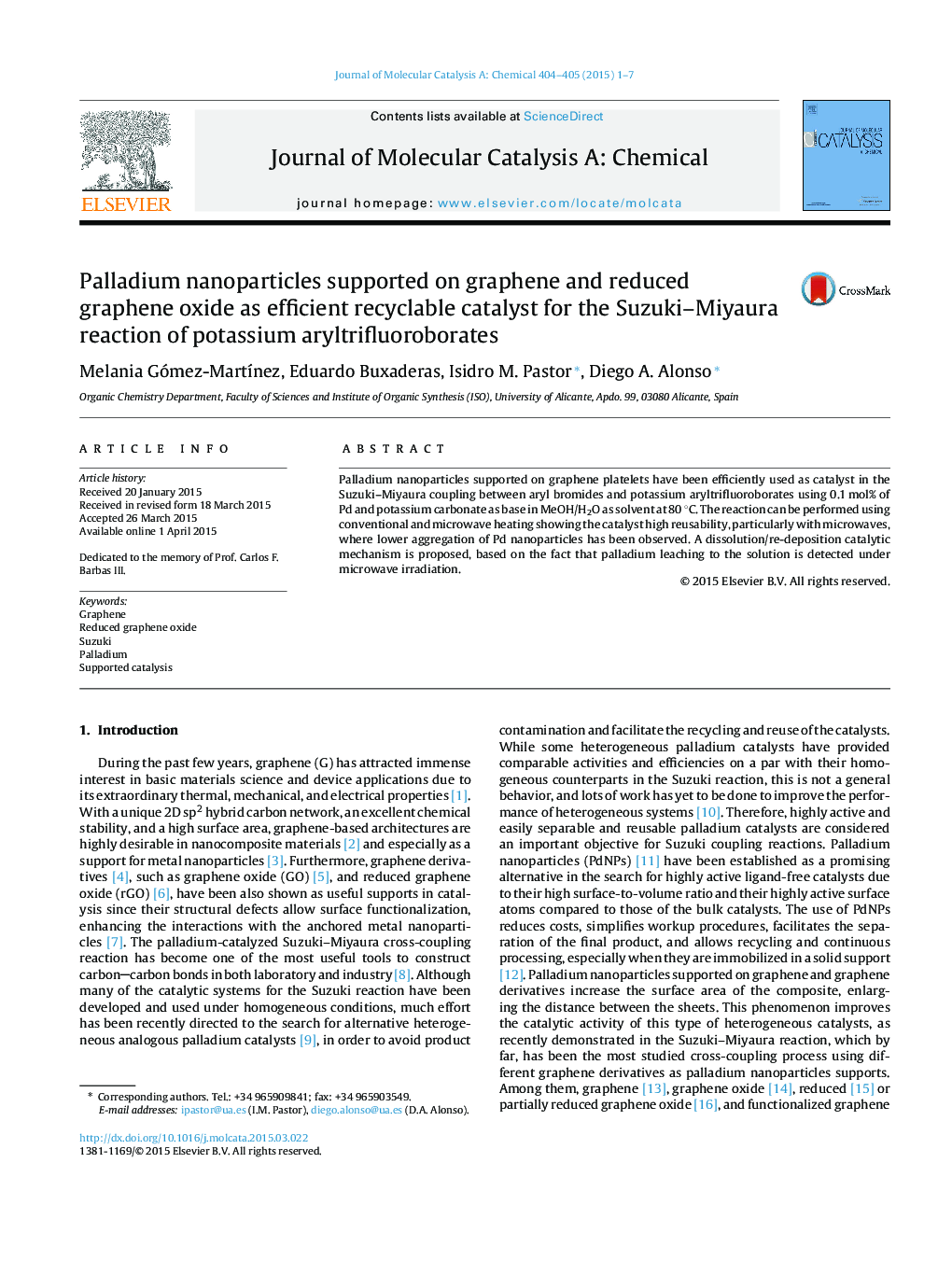| Article ID | Journal | Published Year | Pages | File Type |
|---|---|---|---|---|
| 64893 | Journal of Molecular Catalysis A: Chemical | 2015 | 7 Pages |
•Palladium nanoparticles supported on graphene efficiently catalyze Suzuki reaction.•Catalyst can be easily recycled, especially using microwave irradiation.•Coupling reaction can be scaled up to multi-gram scale.•Catalyst stability is higher under microwave irradiation than conventional heating.•Nanoparticles dissolution/re-deposition mechanism is involved.
Palladium nanoparticles supported on graphene platelets have been efficiently used as catalyst in the Suzuki–Miyaura coupling between aryl bromides and potassium aryltrifluoroborates using 0.1 mol% of Pd and potassium carbonate as base in MeOH/H2O as solvent at 80 °C. The reaction can be performed using conventional and microwave heating showing the catalyst high reusability, particularly with microwaves, where lower aggregation of Pd nanoparticles has been observed. A dissolution/re-deposition catalytic mechanism is proposed, based on the fact that palladium leaching to the solution is detected under microwave irradiation.
Graphical abstractFigure optionsDownload full-size imageDownload high-quality image (139 K)Download as PowerPoint slide
